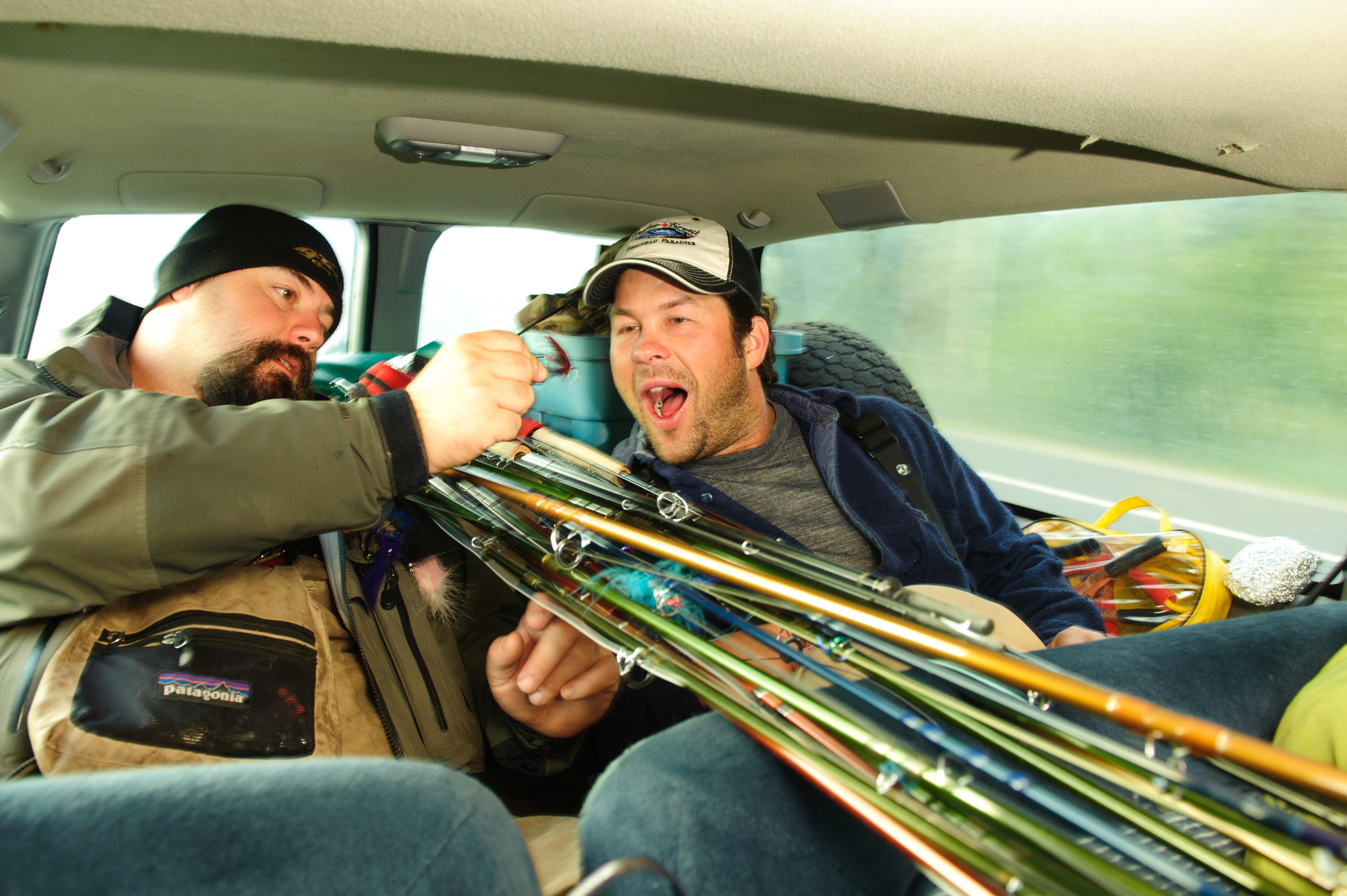Sticky Fingers at the Car Wash, Steamed Shrimp, Cheese Grits and Lifetime Warranties
So here I was, once again arriving in Sanibel, Florida, to chase snook on the beaches for a few weeks. Almost without fail, I’ve managed to squeeze in several trips each year. It’s one of my favorite haunts and has, I’ve got to admit, become pretty much a routine that goes like clockwork. Looking back, perhaps too much of a routine, because this time, I was about to be blind-sided.
After an uneventful ten-hour drive from Mobile that took me through familiar territory – east across the Florida panhandle, through Pensacola and Tallahassee, then a right turn south toward Tampa Bay – I arrived at the condo we’ve stayed in for the last five years. It was great to get out of the cab and stretch my legs. The smell of fresh salt air coming off the Gulf filled my nose, bringing back fond memories of previous visits to this magical barrier island. A moment passed and I turned back to the cab of my truck and reached reflexively behind the seat for the pack I had filled with my favorite reels and – Whoa! – it was much too light. But, I’ve got ahead of my story. Let’s rewind to the beginning.
On the way out of town, I stopped by Bebo’s, a Mobile, Alabama institution, where you can get a car wash, wax, and even an oil change while you snack on munchies that would hardly qualify as health food – besides, I had a customer appreciation card burning a hole in my glove compartment.
I can’t keep myself from injecting a bit of local lore. Thirty or forty years ago, Bebo’s was a hangout of sorts where crime, corruption and clandestine meetings (spelled with a “K” or three, if you know what I mean) went down. Today, it’s a thriving enterprise where the affluent bring their luxury sedans, from Beemers and Mercedes to the occasional Bentley, and you can observe young African American men swarming around the pricy cars in a flurry of flashing white terrycloth.

But I digress. For some reason, I’ve always believed that a clean truck gets better gas mileage. A longtime fan of MythBusters, I probably got that impression from Adam Savage or Jamie Hyneman, and if they did say it was so, I would embrace their verdict as gospel. After all, I’m a man of science.
As on most of my road trips, the bed of my truck was full to the gunwales with high-end fly rods and containers of various and sundry stuff that I conceivably could, but most probably would never, need. Being a cautious guy, my reels always go in the cab behind the seat in an oversized bum bag. After all, I’ve reasoned that, while the canopy over the truck’s bed can always be locked, it’s just got to be safer when my cherished reels are hidden away safely behind the seat. Right? Well, not this time.
The truck moved slowly through the swirling suds and revolving brushes, eventually taking its place in the long line of other dripping vehicles waiting to be vacuumed and towel-dried. My 2002 Dodge Ram pickup hardly rated a second glance. On this particular day I watched as two employees, an elderly black couple, moved methodically around my truck, and the only time the younger workers approached was to push my old faithful out of the way to make more room for the chariots belonging to the members of the city’s upper crust and nouveau riche. I stood there for a few minutes, not thinking of anything in particular before ducking inside to settle up and get enough cash to tip the workers who all seemed to be laboring so hard just to make a few bucks. It’s never seemed very fair, the way others work so tirelessly just so I can drive around in a spanking-clean, albeit aging truck.
One of the car wash crew waved me over to my rig with a towel, as three or four others were just finishing off the grill and inside of the cab’s windshield. The older couple had moved on to another no-status ride. “Good job,” I thought as I handed a fiver to the young man who had signaled me.
O.K. so now it’s ten hours later, 650-plus miles down the road, and the gut-wrenching realization that I’ve been ripped off by some kid who probably had no idea of what he had stolen is beginning to sink in. Two of my treasured reels, a Tibor Everglades and a Rip Tide, were simply gone. To replace those Tibors out of pocket, the tab would be upward of fifteen hundred dollars! Enough to ruin my trip? Well, I’m not suggesting I just shrugged it off, but four years earlier my close friend, Mark Lance, had persuaded me to take out a personal articles policy with my insurance company. Sure, when I made the discovery, I was pretty ticked-off and my feathers more than a little ruffled, but because of that advice, it saved not only the day, but a considerable amount of money as well.

Immediately following Mark’s practical suggestion, I carefully cataloged and photographed my rods, reels, flies, fly-tying material, waders, boots, camera gear, and accessories. With pencil and paper (and I confess a calculator) in hand, I carefully figured out what it would cost me to replace everything at today’s value and no, because Sandra, my wife is a regular reader of this column, I am not going to tell you what the value was. Then I called my friendly agent at State Farm, who I’d worked with for years, and purchased a policy that would replace any and everything if it were lost or stolen for any reason, anywhere in the world, regardless of who was at fault. I was surprised how reasonable it was to obtain such a policy. That’s off the record, of course. I don’t want my rates to go up.
The upshot and happy ending – two weeks later when I returned to Mobile from Sanibel, I contacted that same agent who filed my claim the very same day. I wasn’t even asked to file a police report or, as I had dreaded, contact management at Bebo’s Car Wash. It was all handled just the way it should have been – tidy, timely and totally tactful. I can go back to Bebo’s because, truth be told, I love that place.
Now, every time I purchase a new piece of equipment, I faithfully catalog and photograph it, and then add it to my policy and, as of this writing, the price of the coverage has remained the same. That covers sticky fingers at the car wash – now on to steamed shrimp, cheese grits, and lifetime warranties.
Besides personal and sometimes, as my previous account acknowledges, painful experience, where do I glean some of my most useful travel tips? Well, frequently at the dinner table. And ours is a large one.
When Sandra and I have a chance, and I’m not on the water chasing snook, we like to have a few friends over for dinner, and sometimes a few grows into a dozen. Our guest list is normally made up of good friends I’ve known for years and, more than occasionally, it’s newfound friends and their families. Around our table, you might find seasoned guides, knowledgeable fly shop owners and outfitters, award-winning photographers and sprinkled in, a local artist or two, many of whose work graces our walls. Whatever the mix, it’s always a lively and interesting bunch of folks and the list is growing by the year.

On one occasion, when our menu included southern steamed shrimp and cheese grits, sometimes called “breakfast shrimp” in our neck of the woods (but I can assure you it makes a mighty tasty dish for dinner guests as well) there were ten of us. Not to sound like a snob, but all of them were well-educated, charmingly articulate and seasoned travelers. As always, the conversation that swirls around our table is upbeat, and, if you’re not reading between the lines too intently, for the most part it’s positive unless we start openly discussing the local conservation disasters waiting to happen. When the discourse starts to get a little depressing – threatening to spoil our enjoyment of a key lime pie, for instance – someone always has the good sense to change the subject. And to my amazement, the conversation is usually steered right back to fly fishing. Yes! It’s no wonder I feel so at ease with my friends and new acquaintances around the dinner table.

Someone might go all “cultural anthropologist” on us, talking about some obscure religious festival in Papua New Guinea that uses wild sago in some of their traditional recipes, a great source of carbohydrate by the way, and from across the table another will chime in, “I wonder what they fish for in Papua New Guinea?” Before you can say “waging ritual warfare” five times, a guest will whip out his or her smartphone like an old west gunslinger, Google it, and we’re off and running. Dang, sometimes I just love the times we live in.
In one such conversation, Ed Anderson, a local artist, was describing his family’s lodge in Idaho, one that happens to be in proximity to Boise. What was I thinking? I started describing the number of beautiful women in Boise. Well, when I was a young man, I spent quite a bit of time there, and to be honest, the number of beautiful women who lived there always dumbfounded me. Then, before I fell headlong into chauvinist territory or got kicked under the table, the conversation mercifully turned to rivers in Idaho, which naturally led to the infamous Ed Abbey and his lifelong fight to keep all the rivers in the west free of hydroelectric dams. Thank God, fly fishing saved the day again.
The mention of Ed Abbey naturally led us to the Glen Canyon Dam and Abbey’s dream of blowing it up. It’s times like these you secretly hope Big Brother or the NSA is not listening in on the cell phones tucked safely away in our pockets. Here was the perfect opportunity to discuss the new conservation movie DamNation, the award-winning documentary that helped bring about a sea change in our national psyche, from awe and pride in what were once viewed as engineering marvels, to the awareness that the life and health of our free-flowing rivers is key to the return of the salmon and steelhead runs in the northwest to their former glory.
At this juncture, Steve Bailey, a local guide and musician, chimed in “Speaking of steelhead, I broke one of my favorite fly rods a few months ago. I sent it back to the manufacturer, and they wouldn’t fix it under the lifetime warranty program.” The manufacturer wanted three hundred dollars to repair Steve’s rod. What’s that about? Of course, the answer came from the other end of the table where my fishing buddy and long-time friend, Norm Zeigler was seated. Remember my recent fishing trip to Sanibel where I discovered my treasured Tibors had been purloined? Norm, who owns the local fly shop on Sanibel, was listening to all of this and getting slightly agitated by Steve’s sad tale. “Steve,” Norm began, “I’ll handle your issue with the manufacturer and get the rod repaired for the traditional fifty-dollar service fee.” From that point, the conversation was about any and everything that had to do with fly fishing.
It turns out that the majority of the high-end fly rod companies are no longer providing unlimited lifetime warranties. In retrospect, the whole lifetime warranty program has always seemed too good to be true. Of course, the rod manufacturer uses the lifetime warranty program to sell more high-end rods. It’s always been difficult to convince a fly fisherman to fork out six or seven hundred dollars for a new rod. It’s a different story when the fisherman thinks he will have this rod for the rest of his life, or at the very least, as long as the company is still in business.
It’s a paradox and a lesson worth learning – the more expensive the rod is, the easier it is to break. Why? Here’s the low-down. The high-end rods are lighter, more powerful and traditionally all tip-flex rods, which makes them easier to damage. The less expensive rods are usually heavier and made from a looser weave of graphite that requires more epoxy, the action tends to be more mid-flex or full-flex, and they are not as prone to damage. It’s not that the mid-flex or full flex rods are not as powerful as the high-end tip-flex rods to cast or fish – it’s just that they require a little experience to throw. Essentially, the action of the rod is just slower, and the fisherman has to compensate for the action by slowing down. It’s a dirty little secret that most fisherman that have been fly fishing for a long time traditionally come full circle and prefer the slower rods.
The important thing is not to get caught up in all the tech-talk. Quite frankly, I can’t remember the last time I visited a lodge where ninety-nine percent of the fly rods were not high-end tip-flex rods – except for the occasional classic bamboo. Which, by the way, are now marketed as tip-flex high-speed bamboo rods. There’s a riddle in there somewhere as well as a conundrum. It’s all relevant I guess – what the marketers are trying to get across is that while it’s still a slow rod, slow is relative. Compared to a thirty-year-old bamboo fly rod, it’s a wicked rod on the water. Just remember that the next rod you buy, and happen to break, might not be covered under the traditional unlimited warranty program. Here are some nasty closing scenarios – the next time you nick that rod with a weighted fly or happen to – Ouch! – accidentally close the car door on your fly rod, or worse yet feed your fly rod to the ceiling fan, it might cost you two or three hundred dollars to get it repaired, and notice I didn’t say replaced. Caveat emptor, know the warranty and know the risks.
In the final analysis, the best way to protect your gear is to purchase a personal articles policy from your insurance agent. If they don’t happen to have a PAP, then contact State Farm Insurance. They have a wonderful policy, for less than the cost of one repair job, you can have all your gear covered, and at least with State Farm they don’t have a deductible. At the very least, consider travel insurance.



Leave a Comment
No Responses to “Sticky Fingers”